Search
Search Results

Image
The Phoenician Expansion c. 11th to 6th centuries BCE
A map illustrating the expansion of the Phoenicians, including the trade routes and process of Phoenician colonization, from its origins in the Levant region of the eastern Mediterranean, until its height when it spanned from Cyprus to the...
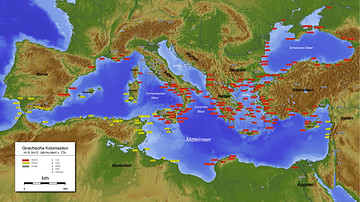
Image
Greek & Phoenician Colonies
Greek (Red) and Phoenician (Yellow) colonization between the 8th and the 6th century BC.
German placenames.
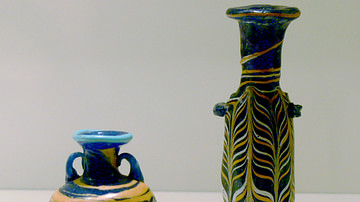
Image
Phoenician Glassware
Two Phoenician coloured glass vessels. 5th-3rd century BCE. (Museum kunst Palast, Dusseldorf)
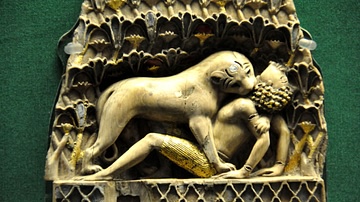
Image
Lioness Devouring a Boy, Phoenician Ivory Panel
This Phoenician carved ivory panel is one of an almost identical pair with one now in the Iraq Museum, Baghdad. They originally formed part of a piece of furniture, perhaps a throne. The incised letter 'aleph' beside holes on the top and...

Image
Phoenician Ivory Sphinx Plaque
This ivory plaque is part of the so-called "Nimrud Ivories." The sphinx wears the typical Egyptian Pharaohs' double crown and an apron with cobra. This indicates that the plaque was made by a Phoenician craftsman. From Nimrud (ancient Kalhu...

Image
Phoenician Bronze Bowl From Nimrud
This bowl was part of a hoard found by Sir Henry Layard in 1850-1851 CE in the North-West Palace at Nimrud (ancient Kalhu). They were probably deposited there in the 8th century BCE. The decoration on the bowls is Phoenician, very similar...
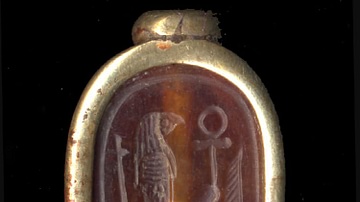
Image
Phoenician Scarab Seal
A Phoenician carved scarab seal (sard and gold) depicting the hawk of Horus holding an ankh and a feather of Maat. 750-500 BCE. (British Museum, London)

Image
Cypro-Phoenician Pottery Vessel
This vessel belongs to a ceramic tradition known as "black-on-red" ware, the most ubiquitous of the Iron Age's Cypro-Phoenician exports. Iron Age II, 1000-539 BCE. From Amman, Jordan. (The Jordan Museum, Amman, Jordan).
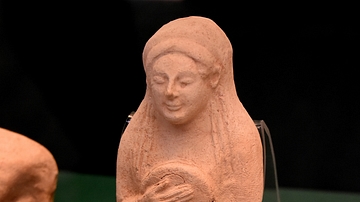
Image
Phoenician Tambourine Player from Tharros
This is a baked clay votive figurine of woman playing a tambourine. The curls of her hair show a Greek influence. The Canaanite traditions of terracotta figurine manufacturer were continued by the Phoenicians, both at home and in the colonies...
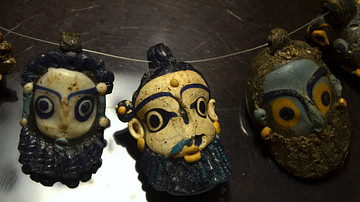
Image
Phoenician/Punic Necklace with Amulets
Phoenician or Carthaginian amulets in the form of bearded heads made of sand-core glass, 4th-3rd century BCE (Cagliari, Museo Archeologico Nazionale).